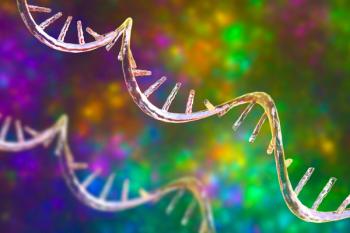
Letter to the Editor Re: "Diminutive Bacteria Useful for 0.2-μm Filter Studies, FDA's Brorson Says" 10/12/09
Letter to the Editor
Dear Editor,
I was keenly interested in your Oct. 7 article relative to
There is a general presumption that bacteria are retained by size exclusion based on their size as seen under the microscope. Actually, bacteria structures are not hard spheres but rather serum enveloped by a membrane. As a result, they are very plastic and are capable of penetrating membranes whose pores are much smaller than the nominal size of the bacteria. At times, they are even believed to penetrate small defects in reserve osmosis membranes. That is a flaw in using 0.2-μm size exclusion membranes as an "absolute" filter.
For that reason, we believe that the industry should consider filtration that works based on electoadhesion as an additional tool as well as those that use size exclusion.
For example, we produce a depth filter with a pore size of 2 μm. Its active component is a nano alumina fiber (AlOOH) that is highly electropositive (+50 mV). In a single pleated layer it can retain greater than 4 LRV of MS2 virus (27 nm) and 6 LRV of E. coli at flow velocities of 4 cm/min and with a pressure drop of 0.1 bar.1,2 A dual pleated layer is capable of retaining 6 LRV of MS2 and greater than 7.5 LRV of E. coli, also at 4 cm/min.
The single-layer filters have been vetted by EPA for sampling viruses in municipal and drinking water.3 Protocols have been developed for assaying Hepatitis A in fruits and vegetables.4
Fred Tepper
Argonide Corporation, Sanford, FL.
1. Tepper F, Kaledin L, Kaledin T. Non-woven electrostatic media for chromatographic separation of biological particles. J Liq Chromatogr Related Technol. 2009;32:607–27.
2. Tepper F, Kaledin. Nanosize electropositive fibrous adsorbent. United States Patent US Patent 6,838,005. 2005.
3. Karim MR. New Electropositive filter for concentrating enteroviruses and noroviruses from large volumes of water. Appl Environ Microbiol. 2009 Apr;75(8);2393–99.
4. Ji-Yeon Hyeon, et al. Comparison of methods for recovery of Hepatitis A virus (HAV) from fresh produce and detection of HAV by real-time RT-PCR and cell culture. Poster presentation. International Association of Food Protection 2009 Annual Meeting. 2009 July 11-16; Brisbane, Australia.
Dr. Brorson responds:
Thank you for alerting us and the general bioprocessing community to your electroadhesion technology and nano-alumina fiber depth filters. FDA is greatly interested in the adoption of new process tools at all stages and scales of manufacture as part of our initiative to incorporate Quality by Design into the products that we regulate. While we wish success for your firm and technology, we do not imply endorsement of any particular approach, equipment or technology by the FDA.
Newsletter
Stay at the forefront of biopharmaceutical innovation—subscribe to BioPharm International for expert insights on drug development, manufacturing, compliance, and more.




